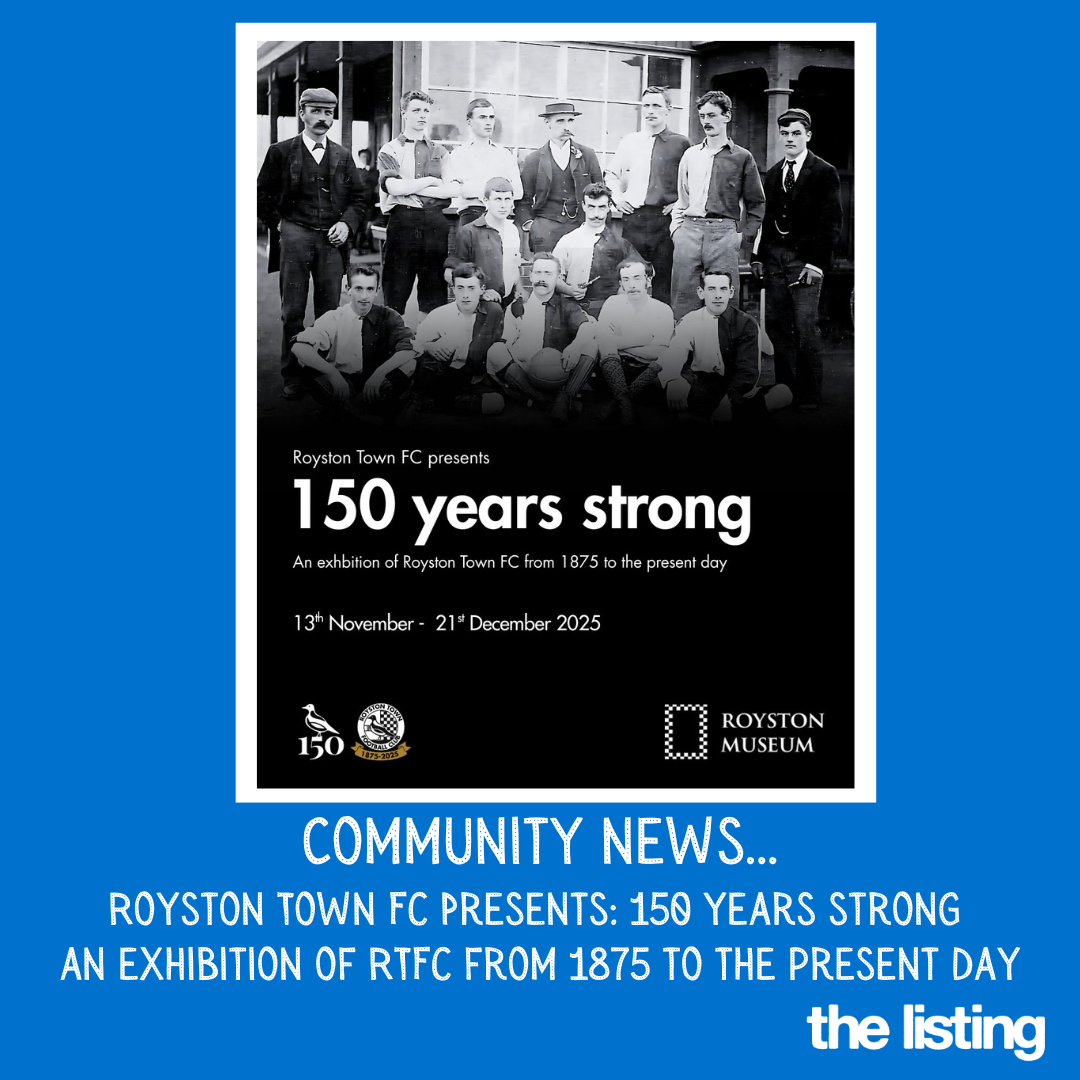The history of Royston Golf Club goes back to when King James I (James VI of Scotland) established his hunting lodge in Royston – the remnants of which still survive in Kneesworth Street.
In celebration of golf being played in 1624, Royston Golf Club are holding events this autumn and inviting people from the town to an open morning at the Clubhouse on Sunday 6th October. The day begins with a team of 12 playing members of the Hickory Golf Society, who play using only wooden golf clubs, starting from the 1st tee from 9.30am.
Meanwhile, you are invited to join us to try your hand at putting or chipping balls on our three-hole par 3 course in front of the Clubhouse, from 10am to 1pm. Clubs and balls will be available.
History of Royston Golf Club
The course at Royston Golf Club is laid out on an ancient landscape. Therfield Heath contains scheduled monuments listed by Historic England under the Ancient Monuments and Archaeological Areas Act 1979, including a Neolithic long barrow, the only one of its kind in Hertfordshire and several Bronze Age round barrows.
There’s a long history to the Club and golf course too. The course was first laid out by students in 1869. However, Royston is not only an old 18-hole golf course, one of the oldest in England, but it is also a historic golf site where the first recorded English golfer, the 1st Duke of Buckingham, played and where King James and his sons may well have played.
When James I (James VI of Scotland) selected Royston to build his hunting lodge and turned Royston into the equivalent of Falkland Palace in the south, it was not surprising that the game of golf might have become one of the activities of his court. James’s mother, Mary Queen of Scots, played golf in Scotland and the tradition was brought south when James succeeded Elizabeth to the English throne. Therfield Heath positioned on the side of the chalk scarp was used for grazing providing traditionally a landscape full of patches of long and short grass, which may have offered something like the coastal links where golf had been played in Scotland. George Villiers, 1st Duke of Buckingham, was recorded playing at Royston on 4th October and December 1624 as well as the 15th January, 1625, and it is possible that golf was played there by other members of the royal court before that.
Two centuries later, two Cambridge undergraduates laid out an 18-hole golf course on Therfield Heath; the area where golf is still played today. The students were Andrew Murray and George Gosset. Known as the first person to ride a ‘penny farthing’ bicycle in Cambridge, Andrew Graham Murray matriculated at Trinity College, in 1867 and later became a prominent lawyer, MP and 1st Viscount Dunedin. George Gosset was the son of Rev. I H Gosset who introduced golf at Westward Ho!, where a club was established in 1864.
In 1869, they and fellow golfers needed a local course and selected Therfield Heath as the best prospect in the area because of the grazed chalk grassland features which gave it a quality akin to an excellent links course. Armed with golf clubs and a hole cutter, they selected an 18th green adjacent to Royston Cricket pitch and from there mapped the course out establishing the holes by eye and the distance of their ball strikes.
The course was well received, and the student club soon had 17 members, paying a 2/6 (two shillings and sixpence) annual subscription. However, the distance of 8 miles between Royston and Cambridge proved to be difficult so the course was abandoned in 1871 and this club did not survive.
When Royston golfers decided to form a club in 1892, they resurrected the old Royston course with the encouragement of the Conservators of the Heath and the help of students from Cambridge. The Club records report “the course that was designed followed much of the original eighteen holes set out in 1869”.
This was the prelude to the establishment of Royston Golf Club on 1st May 1892. Women played golf on the course in the early years of the Club but, in 1907, Royston Ladies Golf Club was founded with their own clubhouse behind the main clubhouse building. It was acknowledged that the efforts from lady members were key to the maintenance of both the Club and course during the two World Wars. In 1956 the Ladies Golf Club was amalgamated with Royston Golf Club.
The map of the course in the early 20th century supports the fact that the current course is laid out mainly where Murray and Gosset first laid out their course. Although there have been changes over the past thirty years, mainly to increase the course length and to avoid playing two holes across the road, every effort has been made to preserve its charm and style. Sited on a Site of Special Scientific Interest, surrounded by Ancient Monuments and laid out across the chalk hills, the Royston Golf Club course has a unique character that cannot be replicated anywhere else.














